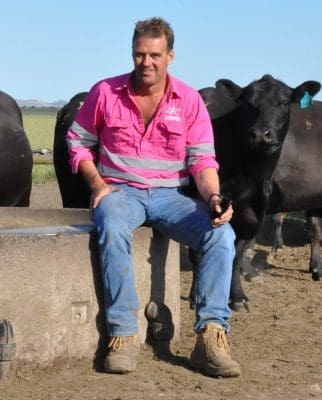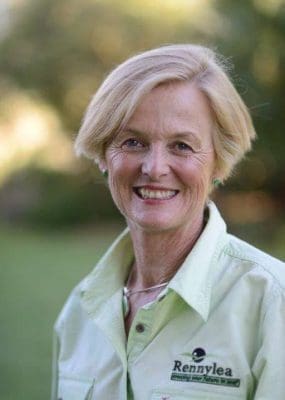SEEDSTOCK producers have recently challenged truth in labelling claims on commercial livestock listings on popular auction platforms, suggesting some bloodline claims included in descriptions are either vague, or non-existent.
The most recent concerns have been linked to AuctionsPlus commercial cattle and lamb listings, but in truth similar claims are often being made verbally when commercial cattle or sheep are sold through the saleyards system, and even via paddock sales.
In an effort to protect their brand identities, seedstock producers, both cattle and sheep, last week encouraged Auctions Plus to police the accuracy of statements in stock listings referencing certain desirable bloodlines.
“A few weeks ago I exposed the practice by agents of ‘loosely’ describing the genetics in livestock on AuctionsPlus,” one concerned lamb seedstock producer wrote on social media.
“On a weekly basis we were seeing lines of sheep being sold as carrying our bloodlines, with only an extremely loose connection to our program. Many have no genetic relationship at all, or contained only 25pc of our genetics,” he said.
He suggested the issue was also rife across the Angus cattle and Merino sheep industries. “Mainstream stud brands appear on hundreds of assessments and speaking to the owners, they have little connection to the breeding programs. Just agents trying to value-add stock by using prominent prefixes,” he said.
The ram producer contacted AuctionsPlus last week, saying that if an assessor described a line of stock as carrying a genetic bloodline, the assessor should have an ‘extremely high confidence’ that the animals (sheep or cattle) were at least 50pc that bloodline.
“That is, 50pc genetics of 100pc of the animals sired by bulls or semen from the stud mentioned,” he suggested. “That doesn’t cover someone who has say, one bull from the claimed bloodline, and another five of other bloodline. In this case under the current system, the description often still references the more favoured stud name.”
This loose description was ‘convenient laziness’ to sell a product at a premium for something that has little association with the given seedstock source, he said.
The concerned seedstock producer told AuctionsPlus he was looking at trademarking his brands closer, to stop the issue re-occurring.
AuctionsPlus on Friday confirmed to Beef Central that there had been recent cases where beef seedstock producers had questioned the legitimacy of bloodline claims using their prefix in sale listings, contacting the agent or vendor direct, and asking for the removal of their name from the assessment.
“But a lot of the examples where bloodlines are mis-stated are not outright mis-representation. It may be that they have used a certain bloodline in the past, but are perhaps being selective in the stud prefixes that they choose to promote, based on reputation,” an AuctionsPlus spokesman said.
AuctionsPlus issued a brief advice to accredited assessors last week, reinforcing the need to avoid mis-stating bloodlines in assessments.
“If stock are stated to be of (or joined to) a certain bloodline, assessors need to be able to provide registered sire IDs, dates when the last registered bull was purchased, how long the vendor has been using the bloodlines, and pedigrees,” the advice said.
“If stock are found not to be of a particular bloodline, the stud may seek damages for false claims,” AuctionsPlus warned.
It told assessors that if bloodline information could not be verified, it should not be included in an assessment.
AuctionsPlus chief executive Angus Street told Beef Central that it was a concern if stakeholders were enhancing genetic claims to try to maximise appeal of livestock.
“At the moment, bloodline descriptions on AuctionsPlus are all free-text, but one of the solutions we are looking at is a digital solution that would allow us to better control genetics references,” Mr Street said. “We’re looking at including in our assessment software the ability to select certain bloodlines, from a drop down menu, which would also include references to bulls purchased, and how long they had been in use from that stud,” he said.
Mr Street said that software development process had pre-dated recent seedstock producer concerns about bloodline claims, but he confirmed that the issue had ‘floated around,’ at times in the past.
“It tends to be tagged to a certain selling season, when there are a lot of young cattle about,” he said.
Mr Street said such claims were not breed specific, and appeared occasionally across all breeds of sheep and cattle being listed. He agreed that the issue appeared to be more evident in southern listings than those out of northern Australia.
“I wouldn’t say it’s a big issue, but it is nevertheless a concern,” he said. “But we completely understand the motivation of bull and ram breeders to protect their brands in the marketplace.”
“At this stage, it’s about working with stud breeders, our AuctionsPlus assessors, and commercial vendors in coming up with a solution which better captures the genetic descriptions of cattle being sold.”
“In the meantime, we’re encouraging vendors to use some common sense, and be genuine in claims.”
Bull breeder reaction
Beef Central approached two prominent southern Angus seedstock producers for comment on the issue.

Tom Gubbins
Te Mania Angus principal Tom Gubbins said he was aware of the problem, which he said came up ‘from time to time.’
“We, and other seedstock producers spend money on developing our brands and our reputation, so it is reasonable that we make sure it is being represented properly,” he said.
“To be honest, we find such use of our name a bit flattering, and tend to take a gentle approach. In our case if we see an example of a vendor selling stock linked with Te Mania’s genetics, where we can see no connection in bull sales history, we may get in touch, have a talk about where the stock have come from, and invite them to attend our next bull sale,” he said.
“Generally, such people are embarrassed by the call.”
While each AuctionsPlus assessor had a responsibility to try to ensure that cattle were ‘as described’, Mr Gubbins said the responsibility for accuracy of bloodline descriptions ultimately rested with the vendor.
Asked what a ‘fair’ level of representation was in a mob of sale cattle to claim a connection with a certain bloodline, he said it should be at least 50pc of the calves being by the stud’s bulls, in his opinion.
“Terms like ‘Te Mania bloodlines’ can be a bit hit-and-miss. Does that mean at some point in the past the vendor has bought some Te Mania bulls, or is there a reasonable percentage of calves in the mob sired by our bulls? “If there are numerous calves in a mob sired by bulls from studs other than Te Mania, it’s only a very loose association. So ‘buyer beware’.”
Mr Gubbins said for buyers looking for a cast-iron guarantee over genetics, his business’s Team Te Mania program filled that role, with team-members committing to using Te Mania bulls exclusively.
“Part of the reason Team Te Mania was developed was so that we could really manage issues like this – for our own benefit, as well as the end-user,” Mr Gubbins said.
“It’s about gaining a reputation for supplying a particular type of animal, that buyers know will perform. By and large, that is working.”
Rennylea’s experience
Lucinda Corrigan from Rennylea Angus near Culcairn said recently she had seen a commercial cattle sale report mentioning a result for a line of cattle claimed to be bred from Rennylea bulls.

Lucinda Corrigan
“I asked around our team whether anybody had ever heard of the vendor as one of our clients. Nobody had,” she said.
“We approached the vendor, and it turned out he had bought some breeders from one of our long-term clients – which I wouldn’t mind about, but the fact was the cattle he was selling were not by Rennylea bulls.”
Inaccurate descriptions of bloodlines used in commercial sale cattle had been around a long time, Ms Corrigan said.
Asked how close the connection needed to be to justify describing a line of cattle as ‘Rennylea genetics’ or ‘by Rennylea bulls,’ she said in her opinion, it should mean that they had bought a ‘reasonable proportion’ of Rennylea bulls over the previous five years.
“If they had bought our bulls ten or fifteen years ago – and I have seen that – I would think that is a pretty tenuous link,” she said.
There was an opportunity in this issue for leadership, from the agency profession, Ms Corrigan said.
“Agent assessors could perhaps apply more scrutiny in such claims in lines of sale cattle. All stud breeders would be asking for is for descriptions to be fair.”
Ms Corrigan said while some sale cattle vendors might be looking to exploit the stud name with the most profile, some descriptions might not be deliberate misrepresentation, so much as a casual reference.
“For a bull breeder like us, we are not in a position to routinely monitor or follow-up such claims. That would take a lot of extra time and effort, that we simply don’t have. But our reputation is important, and for a line of feeders carrying a false connection to Rennylea going into a feedlot and under-performing, it does not do our own reputation any good.”
But with access to DNA fingerprinting these days, such issues could be fairly quickly verified, if necessary. “All of our calves are DNA sampled at birth, for parent verification. But we’d like to think that we don’t ever have to do it, if a feedlot should raise an issue with us.”
Asked whether seedstock producers would ever be likely to take legal action over misrepresentation on genetics, Ms Corrigan said she personally would not, but she could not speak for others.
“Some people are litigious, and some aren’t,” she said.



I agree with Mr Gubbins. This is a very slippery slope. At the same time some the agency’s involved should simply be verifying the origins to save alot of the hassles. Something for those upset to ponder is if they were front paddock livestock and someone claimed it was a certain breeders genetics but weren’t would they have the same reaction if the livestock should be hidden out the back.
Cheers